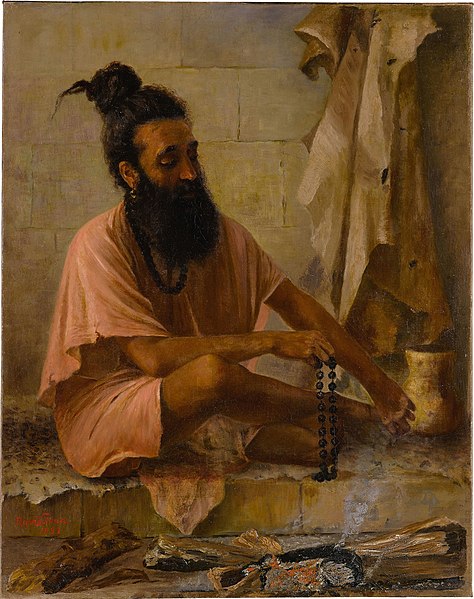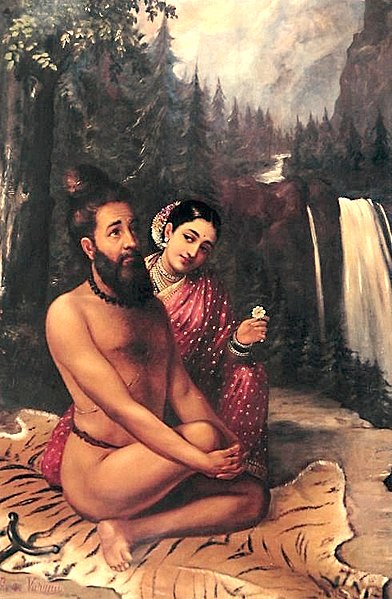The Saptarshi are the seven seers of ancient India who are extolled in the Vedas, and other Hindu literature such as the Skanda Purana. The Vedic Samhitas never enumerate these rishis by name, although later Vedic texts such as the Brahmanas and Upanisads do so.
Saptarshi: Vishvamitra (top left), Jamadagni (top middle), Gautama (top right), Vasishtha (in the middle, beardless), Kashyapa (down left), Bharadvaja (down middle, in a yogic asana, upside down), Atri (down right). Pahari, from a Bandralta-Mankot workshop; c. 1700. Government Museum and Art Gallery, Chandigarh
Vishvamitra is one of the most venerated rishis or sages of ancient India. Vishvamitra is one of the seven Brahmarshi. According to Hindu tradition, he is stated to have written most of the Mandala 3 of the Rigveda, including the Gayatri Mantra (3.62.10). The Puranas mention that only 24 rishis since antiquity have understood the whole meaning of —and thus wielded the whole power of — the Gayatri Mantra. Vishvamitra is supposed to have been the first, and Yajnavalkya the last.
Vishvamitra by Raja Ravi Varma
Coin of Dharaghosha, king of the Audumbaras, in the Indo-Greek style, with depiction of Vishvamitra, c. 100 BCE. Obv: Standing figure, probably of Vishvamitra, Kharoshthi legend, around: Mahadevasa Dharaghoshasa/Odumbarisa "Great Lord King Dharaghosha/Prince of Audumabara", across: Viçvamitra "Vishvamitra". Rev: Trident battle-axe, tree with railing, Brahmi legend identical in content to the obverse.
Vishvamitra is seduced by Menaka.
Vishvamitra looks at Rama as he breaks the bow, winning the hand of Sita in marriage. Painting by Raja Ravi Varma.





